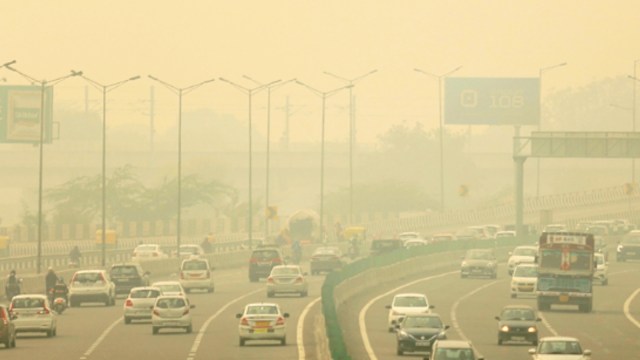Weather conditions prompt rethink on cloud seeding dates
Cloud seeding involves releasing salts into clouds to provide nuclei for water vapour to condense around and form droplets, thereby increasing the possibility of rainfall.
 Earlier, Nov 20-21 were being considered for the exercise, in light of the pollution situation in the capital. Express
Earlier, Nov 20-21 were being considered for the exercise, in light of the pollution situation in the capital. Express Dates for a possible attempt at cloud seeding to induce rainfall in Delhi are now being reassessed with conditions being unfavourable around the initial November 20-21 dates that were being considered.
Cloud seeding involves releasing salts into clouds to provide nuclei for water vapour to condense around and form droplets, thereby increasing the possibility of rainfall.
An environment department official said the dates for the pilot project are being reassessed since an earlier assessment that there might be a western disturbance that could affect Delhi around November 18 or 20 no longer holds true.
According to India Meteorological Department officials, a western disturbance is set to affect the western Himalayan region on November 19, but its impact over Delhi could be limited to a possible change in wind direction from northwesterly to easterly.
Cloud seeding would require clouds with moisture over the city, which in the winter, is brought by western disturbances.
The official, however, added that the process of seeking permissions for cloud seeding as a pilot project this winter has kicked off, with the project likely to require a set of around 10 to 11 permissions, including operational and security clearances from the Directorate General of Civil Aviation, the Ministry of Defence, the Ministry of Home Affairs, the Bureau of Civil Aviation Security, the Delhi government, and the Airports Authority of India.
The project in-charge, Manindra Agrawal from IIT Kanpur said, they are “re-looking and closely following the radar to see what is possible,” as the earlier dates are no longer feasible.
Agrawal said the team hopes to affect an area of 300 square kilometers, adding that cloud seeding as a way of dealing with pollution levels may work at scale, but not for a very long period of time. “The ballpark cost estimate is around Rs. 1 lakh per square kilometer,” he said.
The process involves using an aircraft, in this case, an IIT Kanpur aircraft that is already fitted with equipment, to release the ‘seed’ or a combination of salts into the cloud.







